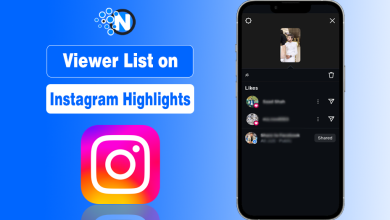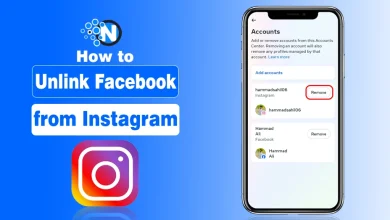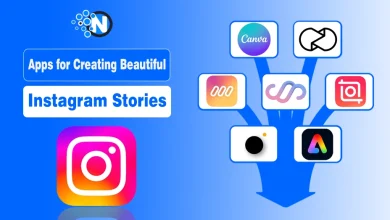Twitter vs Instagram – Which One is Better for Business?
One of the most discussed topics among marketers is Twitter vs Instagram. Despite being social platforms, they have evolved into key marketing hubs for brands and businesses. Not only for being accessible but also for their larger audience, they have gained immense popularity in the digital world.
Instagram, owned by Meta, and Twitter (now called X), both are the most used social sites across the globe. Thus, marketers can get massive benefits if they follow the right tactics.
In this guide, I will compare different aspects of both Twitter vs Instagram for business to let you know which can be a good pick for you.
What is The Popularity Index of Twitter and Instagram?
Twitter and Instagram are popular social media platforms but have distinct differences in features, target audience, and content focus. There is no need to introduce what you can do or how you can use them.
That’s why I have mentioned a short overview in the under section while highlighting some key metrics.
- Twitter (X): Elon Musk is the current of Twitter. It is a social platform with microblogging features that permits businesses to share short and concise updates known as tweets. It emphasizes real-time communication and encourages conversations through hashtags and mentions.
- Instagram: Instagram is a visual-centric platform focused on photo and video sharing. Mark Zuckerberg is the majority shareholder of this platform. It offers various creative tools, filters, and editing features to brands and users to enhance visual content.
Twitter vs Instagram Active Users
Here you can see how many users on Twitter vs Instagram in this users’ breakdown and yearly timeline:
| Platforms | Monthly Active Users | Daily Active Users |
|---|---|---|
| Twitter (X) | 650 Million | 200 Million |
| 2 Billion | Around 800 Million |

Twitter vs Instagram – Which is Good for Business?
After using both platforms for marketing campaigns, I have extracted some points that will clarify the battle of Twitter vs Instagram which is better for business. You should understand them to determine which one is a good option for both offline and online businesses.
1 – User Base and Engagement
Effective marketing requires you to learn about the user base of a social media platform as well as engagement levels. Let’s compare Twitter and Instagram in this regard.
Twitter receives around 611 million active users. It is known for its active user base, particularly in the age group of 25-34. The platform offers a dynamic environment that encourages instant engagement and facilitates swift interactions and discussions among users.
These aspects make it the optimal option for connecting with an audience keen on current trends and news.
Instagram has surpassed Twitter in terms of monthly engaged users. It has more than 2 billion monthly active users. Thus, it is a premier destination for engaging media. The majority of its audience is comprised of people aged 18 to 34.
Instagram is designed to keep its users interested with eye-catching images and interactive content. Hence, it can be a good marketing source for the real estate and automotive industries.
2 – Content Types and Formats
Different businesses require different content types and formats to convey their message effectively. Let’s explore how Twitter and Instagram support various content types.
The character limit of Tweet for normal X users is 280. It encourages concise and to-the-point messaging. Thus, it is the best platform to share news, updates, and quick thoughts.
Besides text, you can attach images, videos, and GIFs to tweets. Ultimately, it provides a visual element to the content. In addition, you can use Twitter trending hashtags for improved reach.
Instagram’s primary focus is visual content. Users can share photos and videos, apply filters and editing effects, and craft engaging stories. Instagram offers features like videos and reels for short-form video content.
The platform’s emphasis on visual storytelling makes it a powerful tool for fashion, travel, food, and lifestyle businesses. Also, the caption limit of 2,200 characters lets you describe your offerings and add more hashtags.
3 – Advertising and Marketing Opportunities
Effective advertising and marketing strategies are crucial for businesses to reach their target audience. We have compared the opportunities offered by Twitter and Instagram below.
Twitter is a well-established advertising platform that offers various options for businesses to promote their products or services. It provides tools for targeting specific demographics, interests, and locations.
When you promote tweets and trends, it can improve the reach of marketing campaigns. Hence, businesses can engage with a wider audience.
Instagram’s advertising platform has seen significant growth and provides a range of options for businesses. Sponsored posts, stories, and carousel ads empower businesses to showcase their offerings creatively.
Businesses can use targeting capabilities to reach users based on their interests, behaviors, and demographics. The visual nature of Instagram makes it a compelling platform for brand storytelling and product promotion.
4 – Real-Time Interactions and Customer Support
It is crucial for businesses to interact with customers in real time and provide efficient customer support to them. Let’s examine how Twitter and Instagram facilitate these interactions.
Twitter excels in real time interactions and conversations. The platform’s character limit encourages concise and immediate responses which make it ideal for promptly addressing customer queries or concerns.
Many companies utilize the potential of Twitter for customer support. This approach allows them to provide quick assistance and maintain a public record of their responsiveness.
On the other hand, Instagram lacks Twitter’s real-time conversational nature. While users can leave comments on posts and direct messages, Instagram primarily focuses on visual content and sharing experiences.
Although customer support can be provided through comments or direct messages, the lack of real-time conversations makes it less suitable for immediate interactions.
5 – Analytics and Insights
You have to track the performance of marketing efforts to refine strategies and measure success. I have compared the analytics and insights available on Twitter and Instagram.
Twitter provides a comprehensive analytics dashboard for businesses to monitor the performance of their tweets and campaigns. Users can track engagement metrics, follower growth, tweet impressions, and more.
This data helps businesses gain insights into their audience’s preferences and optimize content accordingly.
Instagram also offers a comprehensive analytics platform known as Instagram Insights. Businesses can access valuable data on post reach, impressions, engagement rates, follower demographics, and more.
These insights provide actionable insights to improve marketing strategies and enhance audience engagement.
6 – Stories and Disappearing Content
No one in this competitive world has enough time to read lengthy content or watch long videos. Therefore, you have to focus on short content in your marketing campaigns. In this Twitter vs Instagram guide, I also have highlighted this aspect.
Twitter does not have a feature for posts stories which are only about 15 seconds. Moreover, tweets are permanent unless manually deleted by the user.
Instagram Stories are short-lived posts that disappear after 24 hours. Stories let you share brief content, including photos, videos, and text, It creates a sense of urgency and temporary engagement.
7 – Direct Messaging
Direct messaging holds importance when it comes to interacting with customers seamlessly. In this way, you can resolve their queries and provide them with solutions.
X has a direct messaging capability that enables private conversations between users. However, its direct messaging feature is less prominent than Instagram, which is more widely used for communicating and sharing content.
Users can use Instagram’s direct messaging function to engage in one-on-one or small-group chats with other Instagram. Businesses can communicate by text, image, and video with their customers.
8 – Group Chat Sizes
A wonderful opportunity for brands in their social media marketing campaigns is that they can create groups. In this way, they can share updates with a larger audience base simultaneously.
Twitter permits larger group messages with up to 256 participants. Previously, it was limited to 100 mark. This increment has improved the marketing capabilities of X.
Users can add up to 250 participants in group chats on Instagram. Almost similar to Twitter, these group assists in larger-scale conversations.
My Anticipation
The Twitter vs Instagram battle for business is something really extensive. Per my experience and the outcomes I have received, I will prefer Instagram for marketing my business. That does not mean Twitter or X is behind in any aspect, it’s just about the requirements and preferences of my brand.
You have to analyze yours by considering some important metrics. Next, create a strong plan and get over the challenges.
Final Thoughts
These are the details about Twitter vs Instagram and the benefits they can offer in marketing your business. Twitter, once dominating the social media marketing landscape, has faced formidable competition with the rise of Instagram’s popularity.
Although Instagram has become increasingly popular, it may not be essential for marketers to fully quit Twitter. It’s important for businesses to compare and contrast different platforms to pick the one that’s most suited to their needs and the needs of their target audience.




